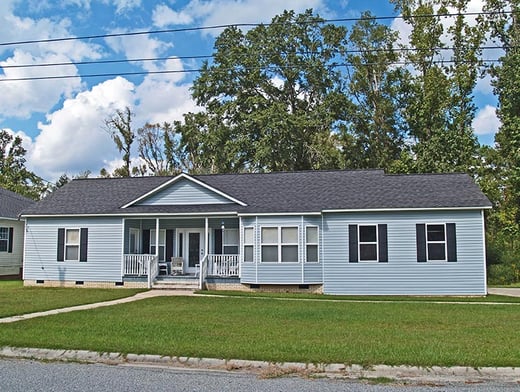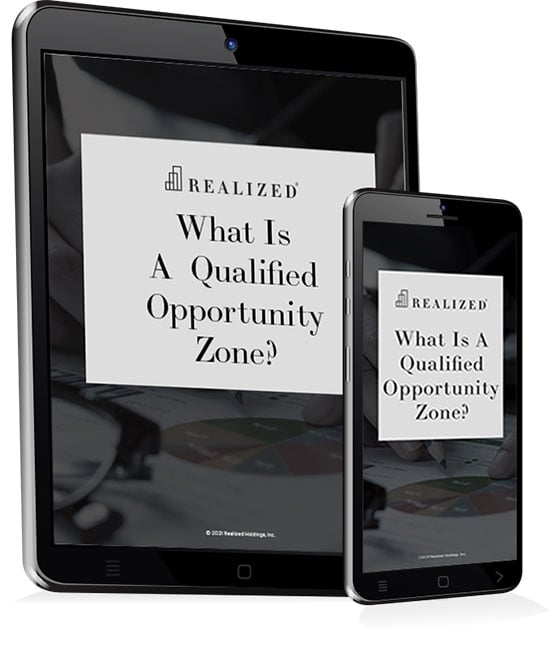
As we’ve pointed out in previous blogs, the Opportunity Zone program is still very new. And, as we’ve also pointed out, the best way to find an experienced, reputable Qualified Opportunity Fund (QOF) manager/sponsor, is to examine the previous track record.
The same advice holds true for advisors targeting the Qualified Opportunity Zone (QOZ) space.
The team at Realized Holdings has more than 150 years of combined experience with alternative investments, such as Delaware Statutory Trusts (DSTs), 1031 exchanges and REITs. This knowledge and processes are successfully and seamlessly being transferred to use of QOZs as portfolio investments.
The Challenge -- A New Type of Investment
The difficulty in determining the “right” Qualified Opportunity Zone project, and by extension, the “right” Qualified Opportunity Fund in which to invest, is the lack of outcomes. The QOZ program represents a long-term investment/tax-deferral/urban renewal effort, with a deadline of Dec. 31, 2026. As of now, three years into the program, its impact is uncertain. However, background and reputation in related areas can be helpful, which is where Realized Holdings comes in.
Realized Holdings, DSTs and Exchanges
David Wieland and David Dahill launched Realized Holdings in 2015. While the company is relatively new, the previous experience of these partners -- and their staff -- is anything but, as evidenced by the following.
- Early activities in structured finance credit products and derivatives.
- Participation in sponsorship of the second-ever 1031 exchange DST offering, and first multi-property DST.
- Involvement with conducting the first Federal National Mortgage Association- (FNMA) financed DST, as well as the first DST financed with a Freddie Mac mortgage.
In recent years, Realized Holdings also put into place the first “cash-out” DST and the first end-to-end individual investor platform (Investment Property Wealth Management). Realized also led the field as the first to launch a DST secondary market.
As such, these skills are in place to help create a positive experience for investors seeking out effective QOZ projects.
DSTs versus Qualified Opportunity Zones
The next question might be: how do DSTs and QOZs compare? The chart, below, discusses the structure, operations and benefits offered through these investments.
|
Delaware Statutory Trusts |
Qualified Opportunity Funds |
|
|
Structure |
|
|
|
Operations |
|
|
|
Benefits |
|
|
While DSTs and QOZs do differ in structure, purpose and operations, both are passive investments. Additionally, the tools used in finding a suitable DST are also useful when targeting an appropriate QOF to fit an investor’s goals and objectives.
An In-Depth Vetting Process
Realized Holdings’ vast array of experience in the DST space transfers well to targeting effective QOFs through the following ways.
Top-down analysis. Realized’s due diligence processes focus on the big picture when it comes to investments. The seasoned team analyzes the current macroeconomic situation, along with capital markets status and real estate market conditions. Also involved is research into demographic data, as well as submarket-specific supply and demand drivers. This is important when it comes to QOZ projects, as it determines the potential success of the development or rehabilitation, which will impact issues including substantial improvement and rate of return.
Bottom-up considerations. The bottom-up analysis involves economic growth prospects, along with additional resources offered through municipal and/or state redevelopment or urban renewal programs in connection with the QOZ benefits, Property and market-level due diligence and project underwriting are included, in an effort to better understand a project’s potential rate of return.
Focus on risk. Finally, the Realized team analyzes risk of individual offerings, and their correlation to similar market deals. Also important is an investor’s portfolio structure, goals and objectives, and risk appetite.
The Conclusion
In closing, we believe that an effective way to identify a potential QOF is by examining the manager’s, or sponsor’s, track record and experience in similar arenas. Advisors should also be held to the same requirements. Realized Holdings’ team spent years building, experience and a reputation in the DST arena, which transfers nicely to the Qualified Opportunity Zone program. As a result, investors can count on a skilled, seasoned team when it comes to finding the ideal QOF and QOZ investment.



